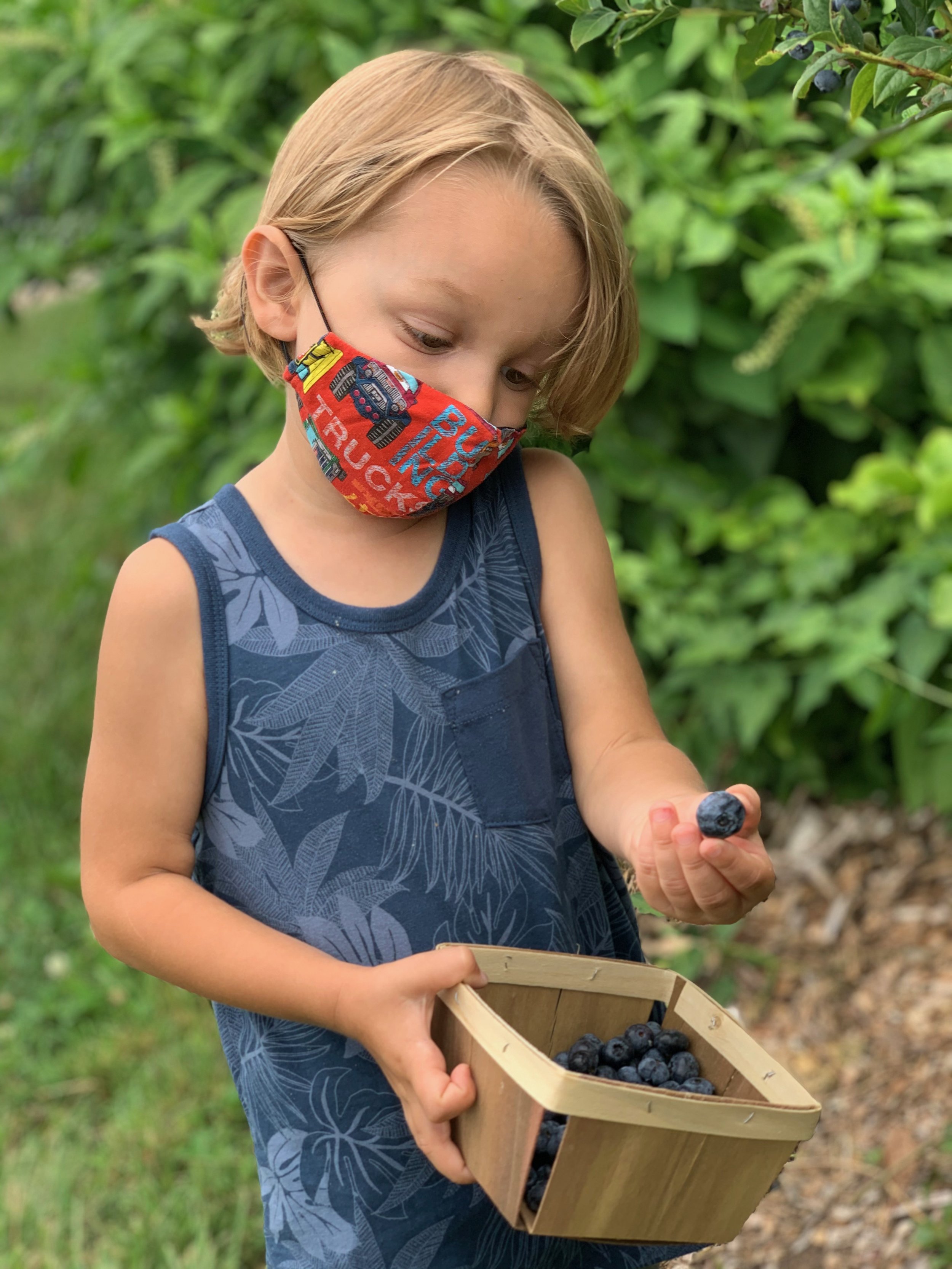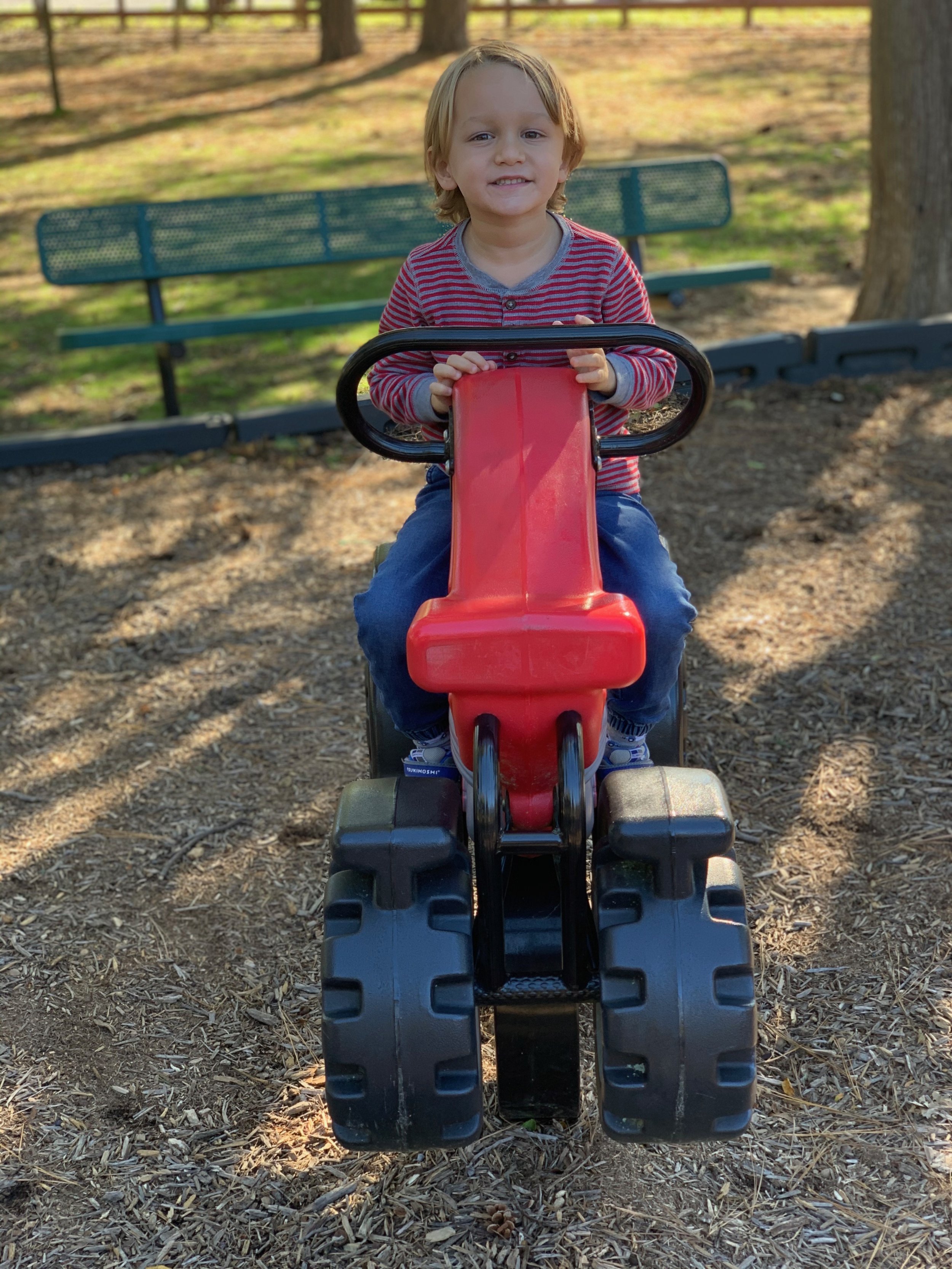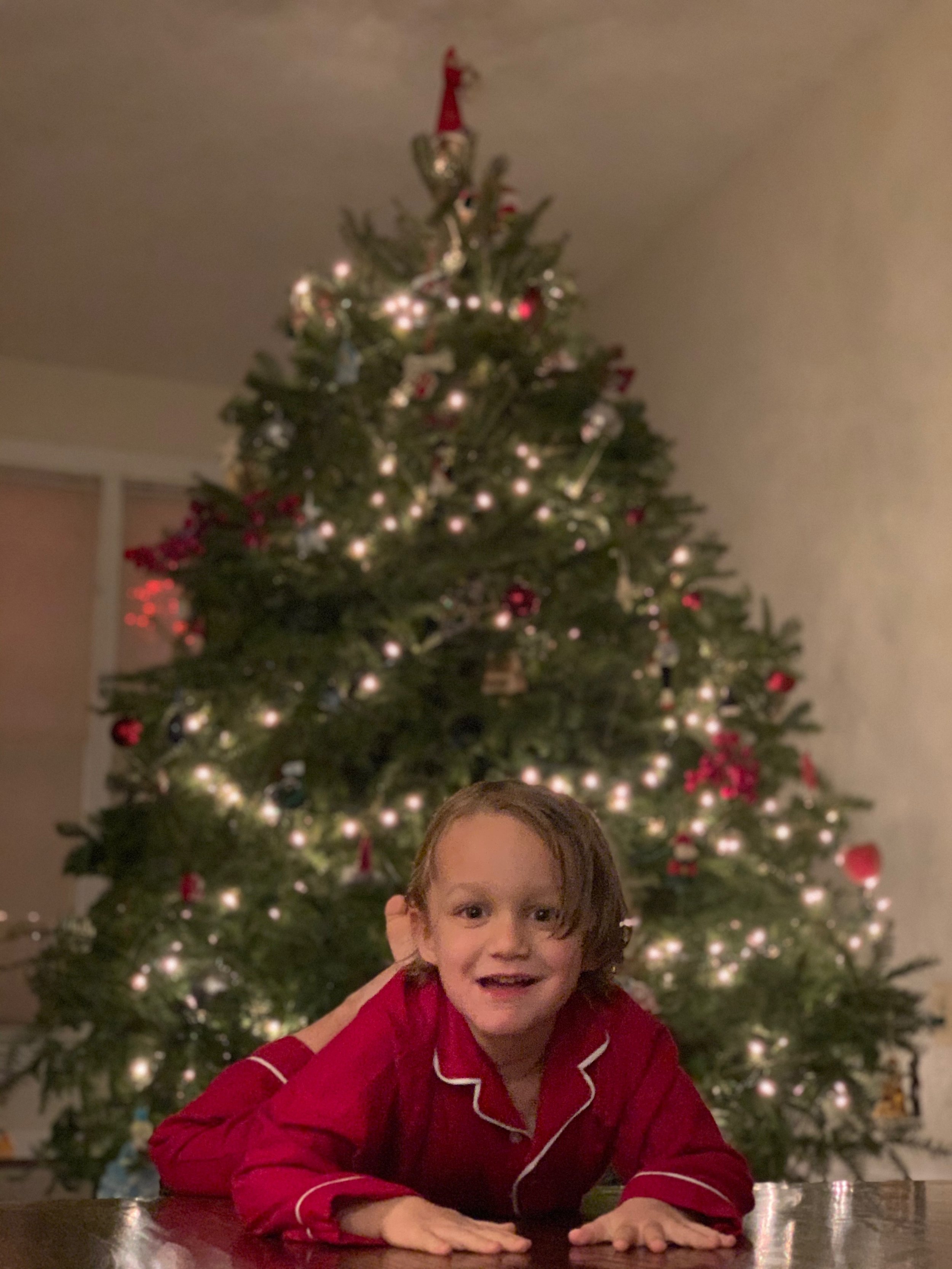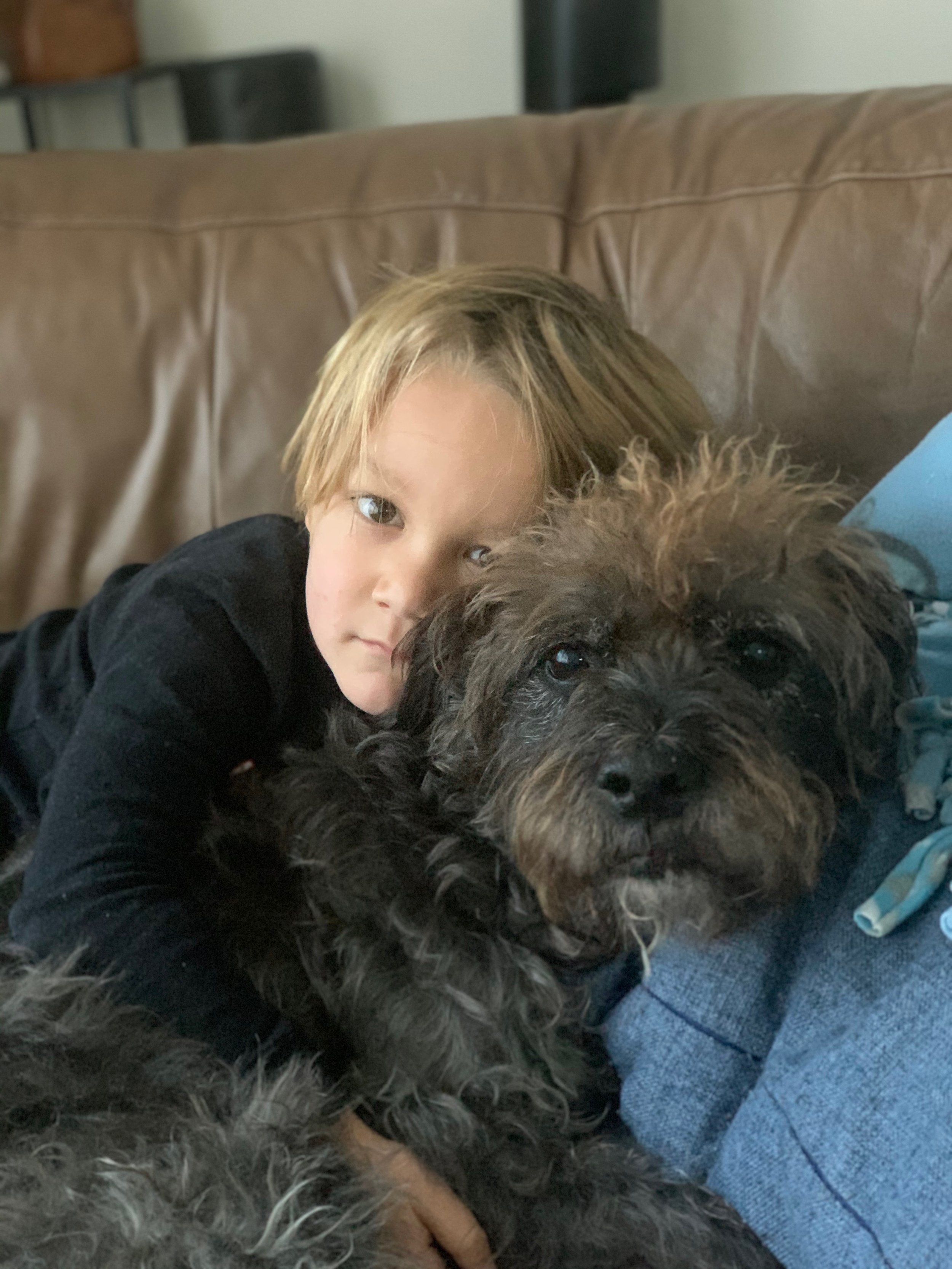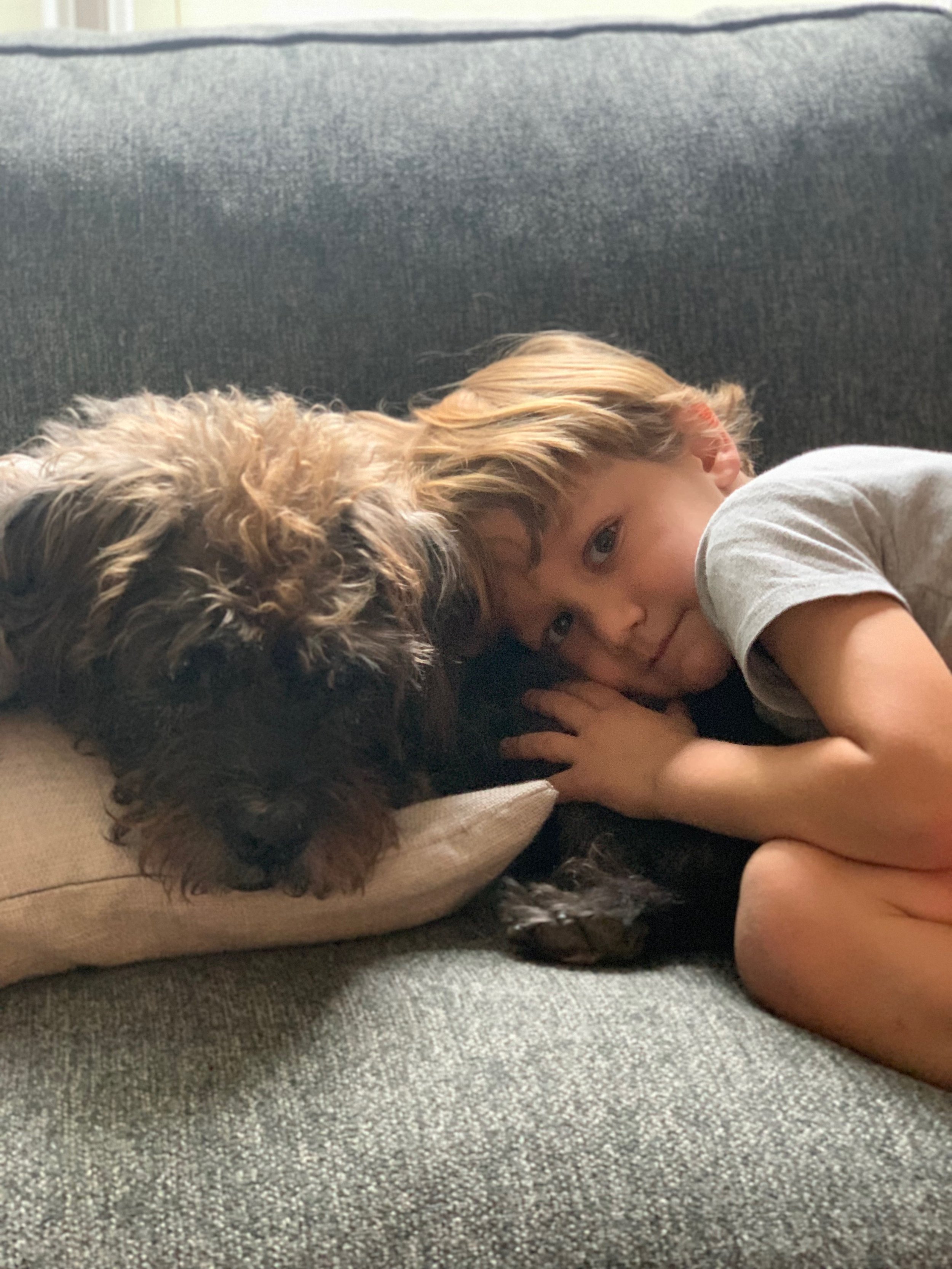
















BRADEN’S STORY
Braden was a smart, artistic, funny, empathetic, and energetic child. He also excelled in athletic pursuits. So in December 2020, when he started walking strangely shortly after his 4th birthday, we knew something wasn’t right. We had been busy decorating the house for Christmas (Braden’s favorite holiday) when we noticed that he seemed wobbly and unsure of his legs. We had seen this once before, but due to the coronavirus pandemic, we couldn’t get in to see experts quickly, and the symptoms seemed to resolve on their own. But after this second incident, we saw every expert necessary to find out what was wrong with our poor little boy.
One of the final (of many) diagnostic measures was an MRI at Children’s Hospital in Washington, DC. Immediately following the scan, the doctors asked to talk to us. We knew this was a bad sign; you always have to wait for results. Worried, we sat close as they showed us a spot on Braden’s brainstem – one that shouldn’t be there. Our hearts stopped. We couldn’t believe our child had a brain tumor.
Our next meeting was with the head of the brain cancer center and several other neurologists and neuro-oncologists. With a kind voice, the doctor explained that they believed Braden had a rare brainstem cancer – Diffuse Intrinsic Pontine Glioma (DIPG). We had never heard of DIPG but would come to learn more than we had ever bargained for about this horrendous disease.
For a period, neither the doctors nor we were certain Braden had DIPG. He had almost no symptoms; most notably when symptoms appeared, they disappeared without treatment. He was running, talking, playing, joking, and for all intents and purposes, was our Braden. The doctors were baffled - they had never seen this before. So we held out hope. Our hope soon faded when the mass started to grow.
We now had to make a choice no parent wants to make: to biopsy the tumor or not. A biopsy of this sort requires delicate brain surgery that could do irreversible damage. But without it, you can’t know the extent of the disease. A biopsy was also essential to apply for a clinical trial, which is the only way to access potentially life-extending treatments for children with DIPG. After many sleepless nights, we decided to move forward. Braden, the resilient champ he always was, awoke from surgery with little pain and no side effects. Hours after brain surgery, he was building with Legos, one of his favorite activities. We were in awe of his resilience, which would characterize the rest of his battle with DIPG.
Braden then got a chest port–his second surgery–to undergo 30 sessions of radiation, which is the only proven standard of care for DIPG. Five days a week for six weeks, Braden donned a Justice League Flash mask and cape and ran into the radiology center at Sibley Hospital, bringing so much joy to the other patients coming for their radiation treatments. After we explained how the radiation worked, Braden decided he wanted to stay awake for it. The staff was amazed he could undergo brain radiation without anesthesia at only four years old.
Immediately after radiation therapy ended, we enrolled him in a clinical trial. For nearly a year, it was working; Braden was more or less asymptomatic. He built hundreds of Legos. He wrote many letters and created countless works of art, which he shared and gifted to the people he knew and loved. He learned to ride a bike. He built sandcastles on the beach, became a great fisherman, and, most of all, continued to spread love to those around him.
In January 2022, after his second FANTASTIC Christmas with DIPG, we noticed he was a bit unsteady again. This time the progression was fast: he lost his balance, his speech became slurred, his fine motor skills started to deteriorate, and one eye began to turn inward. Braden began to lose his battle with DIPG.
Despite these challenges, he was still the happy, determined little boy we always knew. But gradually, he became more frustrated as even the most basic activities like walking, drawing, and speaking became difficult. We continued to push for access to new treatments, but the disease was progressing faster than the system could move to treat him.
Braden soon lost his ability to walk, coordinate his hand movements, talk and swallow. A feeding tube was inserted to ensure he was getting the nutrients he needed to stay strong. At this point, he could only communicate “yes” and “no” by blinking his eyes. But Braden’s mind was fully intact - he was in there.
As a last-ditch effort to try and give him some of his faculties back, he went through another round of radiation, which has become an increasingly common standard of care for children that live long enough to benefit from it. Braden did 20 more sessions over four weeks. Thankfully, it worked; Braden regained some fine motor movement, his laugh returned, he could eat again, and he could also whisper and talk a bit. We were hopeful that he would continue to gain more of his capabilities, and he did for about six beautiful weeks. But then, as often happens with these tumors, it quickly and drastically changed. Braden developed a brain bleed, and five days later, on June 30th, 2022, Braden lost his life to DIPG, eighteen months after diagnosis.
We share this story to help you understand the tragedy and absolute brutality of this disease, which continues to kill more children each year than any other cancer. DIPG must be defeated. And you can help.



